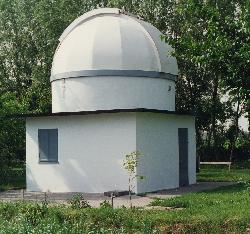
Lombardy is an administrative region of Italy that covers 23,844 km2 (9,206 sq mi); it is located in northern Italy and has a population of about 10 million people, constituting more than one-sixth of Italy's population. Lombardy is located between the Alps mountain range and tributaries of the river Po, and includes Milan, its capital, the largest metropolitan area in the country, and among the largest in the EU.

Cremona is a city and comune in northern Italy, situated in Lombardy, on the left bank of the Po river in the middle of the Pianura Padana. It is the capital of the province of Cremona and the seat of the local city and province governments. The city of Cremona is especially noted for its musical history and traditions, including some of the earliest and most renowned luthiers, such as Giuseppe Guarneri, Antonio Stradivari, Francesco Rugeri, Vincenzo Rugeri, and several members of the Amati family.

Bagnolo Mella is a comune and town in the province of Brescia, in Lombardy.

Bassano Bresciano is a comune in the province of Brescia, in Lombardy. As of 2011 Bassano Bresciano had a population of 2,237.
Manerbio is a town and comune in the province of Brescia, in Lombardy, northern Italy. It received the honorary title of city with a presidential decree on May 14, 1997.

Pertica Alta is a comune, an Italian town of 559 inhabitants in the province of Brescia, in Lombardy. It is located in the upper part of the province and belongs to the Valle Sabbia mountain community.

Pontevico is a comune in the province of Brescia in Lombardy. It is on the left bank of the river Oglio. As of 2021 Pontevico had a population of 7,038.

The Via Postumia was an ancient military Roman road of northern Italy constructed in 148 BC by the consul Spurius Postumius Albinus Magnus.

Goito is a comune with a population of 10,005 in the Province of Mantua in Lombardy. Goito is 20 kilometres (12 mi) north of Mantua on the road leading to Brescia and Lake Garda, and straddles the old east–west Via Postumia between Cremona and Verona. The town is on the right bank of the Mincio River at a key crossing. The birthplace of Sordello, Goito is part of the historic region known as Alto Mantovano and was the site of a notable fortress.
Pozzaglio ed Uniti is a comune (municipality) in the Province of Cremona in the Italian region Lombardy, located about 80 kilometres (50 mi) southeast of Milan and about 8 kilometres (5 mi) north of Cremona.
Robecco d'Oglio is a comune (municipality) in the Province of Cremona in the Italian region Lombardy, located about 80 kilometres (50 mi) southeast of Milan and about 15 kilometres (9 mi) north of Cremona.

Gazoldo degli Ippoliti is a comune (municipality) in the Province of Mantua in the Italian region Lombardy, located about 110 kilometres (68 mi) east of Milan and about 15 kilometres (9 mi) west of Mantua.
The Via Gallica was an ancient road of northern Italy which connected the Roman municipia of the Pianura Padana. It started from the Via Postumia next to Verona, and connected Brescia (Brixia), Bergamo (Bergamum) and Milan (Mediolanum), passing near Lake Garda.

Brescia is a city and comune (municipality) in the region of Lombardy, in northern Italy. It is situated at the foot of the Alps, a few kilometers from the lakes Garda and Iseo. With a population of more than 200,000, it is the second largest city in Lombardy and the fourth largest in northwest Italy. The urban area of Brescia extends beyond the administrative city limits and has a population of 672,822, while over 1.5 million people live in its metropolitan area. The city is the administrative capital of the Province of Brescia, one of the largest in Italy, with over 1,200,000 inhabitants.
The following is a timeline of the history of the city of Brescia in the Lombardy region of Italy.
The 2019–20 LBA season was the 98th season of the Lega Basket Serie A (LBA), the men's top tier professional basketball division of the Italian basketball league system. The regular season started on September 25, 2019, and was scheduled to finish on April 26, 2020. However, the season was cancelled prematurely because of the COVID-19 pandemic.
The 2020–21 LBA season was the 99th season of the Lega Basket Serie A (LBA), the men's top tier professional basketball division of the Italian basketball league system. The regular season started on September 26, 2020, and finished on May 2, 2021.
The 2021–22 LBA season is the 100th season of the Lega Basket Serie A (LBA), the men's top tier professional basketball division of the Italian basketball league system.

The history of Gottolengo, an Italian municipality located in the Lower Brescian area not far from the borders with the provinces of Cremona and Mantua, can be traced back to as early as the 3rd millennium BC, although the present town was born only in Roman times and then developed over the following centuries. In early medieval times the history of the town was closely linked to the presence of the Benedictine monastery of Leno, then Gottolengo came under the control of powerful local families and, later, of the Republic of Venice. With the advent of Napoleon, the town was part of the Cisalpine Republic and, after its fall, of Lombardy-Venetia; in 1861 it was finally united to the nascent Kingdom of Italy, following its subsequent historical events.

Upper Mantua is a geographical area located northwest of the city of Mantua in the province of the same name and bordering the provinces of Brescia and Verona, bordered to the north by the morainic hills of Lake Garda, to the east by the province of Verona, to the northwest by the province of Brescia, and to the south by the plains of Middle Mantua.











